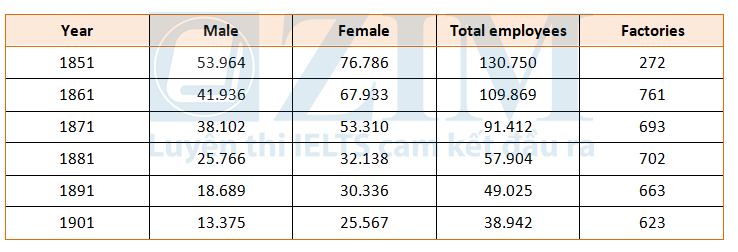detailed look at the table
In general, total numbers of workers and manufactories are inverse, while the first one shows significant drops, the other seems to has an unstable trend.
Looking at the table in more detail, there were 477,100 employees with male taking the bigger proportion . And for most of the time, men outnumbered women except in 1861, when there were almost 30,000 less to compare between man and female employees. At the end of the period, worker numbers decreased about 8 times lower than one in 50 years ago. In term of gender distribution, statistics of male and female are nearly the same in 1901, the gap between was narrowed remarkably
Trend in the number of manufactory is different. From 1851 to 1861 and 1871 to 1881, this figure showed to undergo minimal rises, hit its peak in 1881 with 721 factories. However, this phenomenon started to disappear and showed a downward trend instead in 1891. And finally in 1901, there were only 600 manufactories left, but still about 4 times higher compared to 1851.

ieltswritingtask1.png
